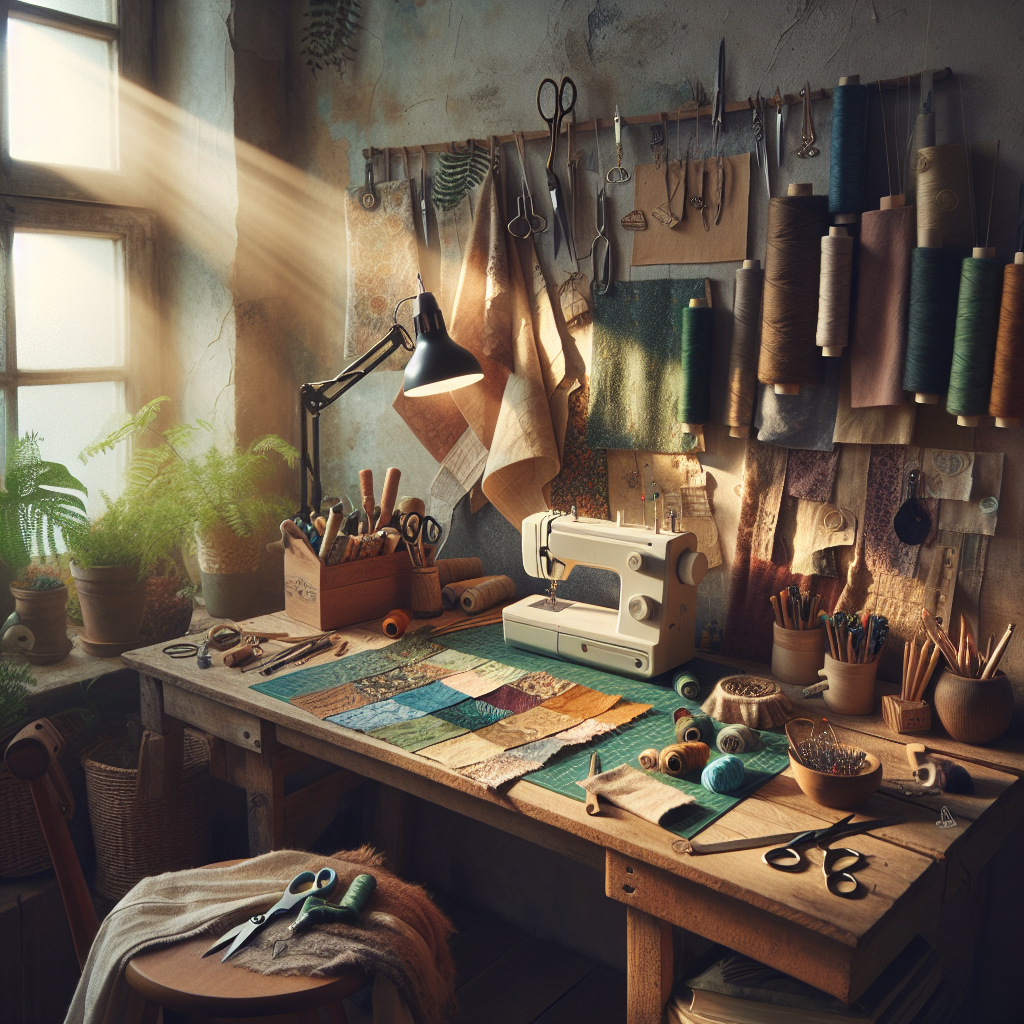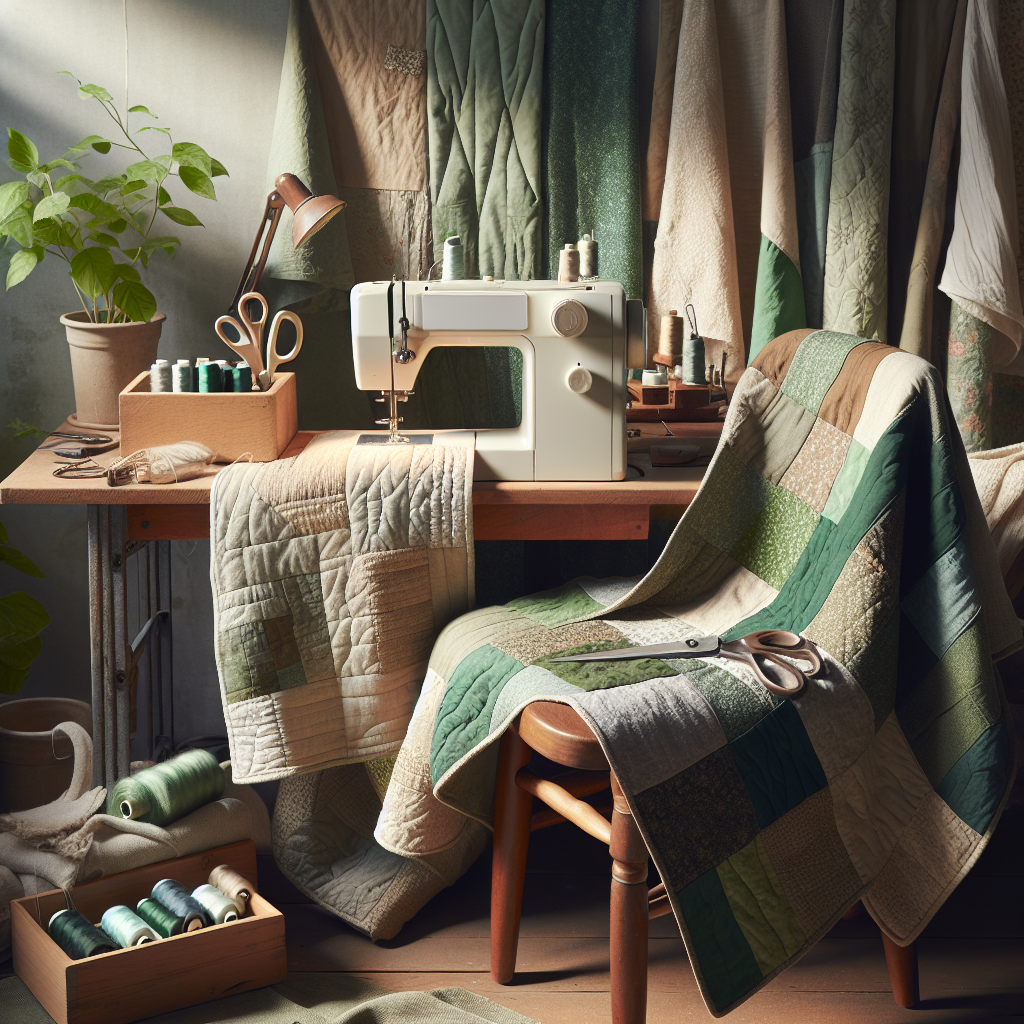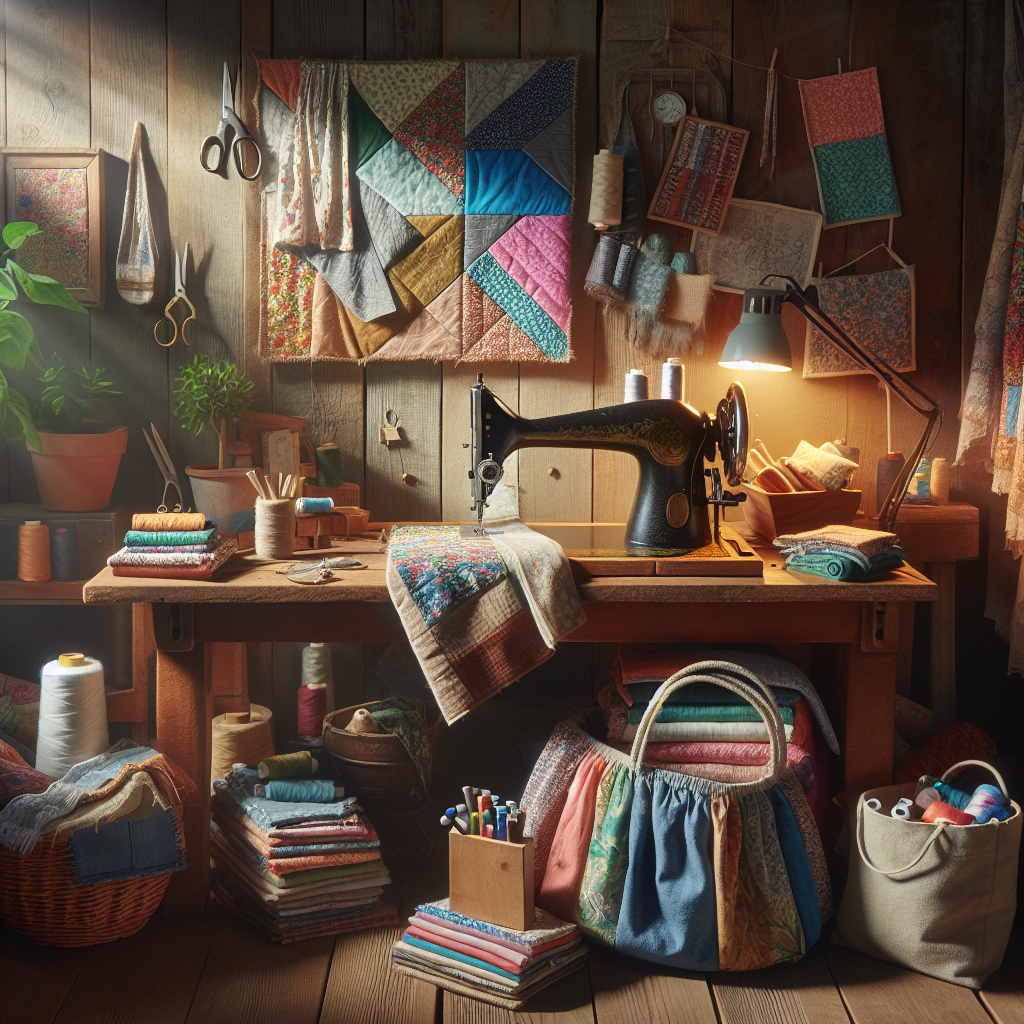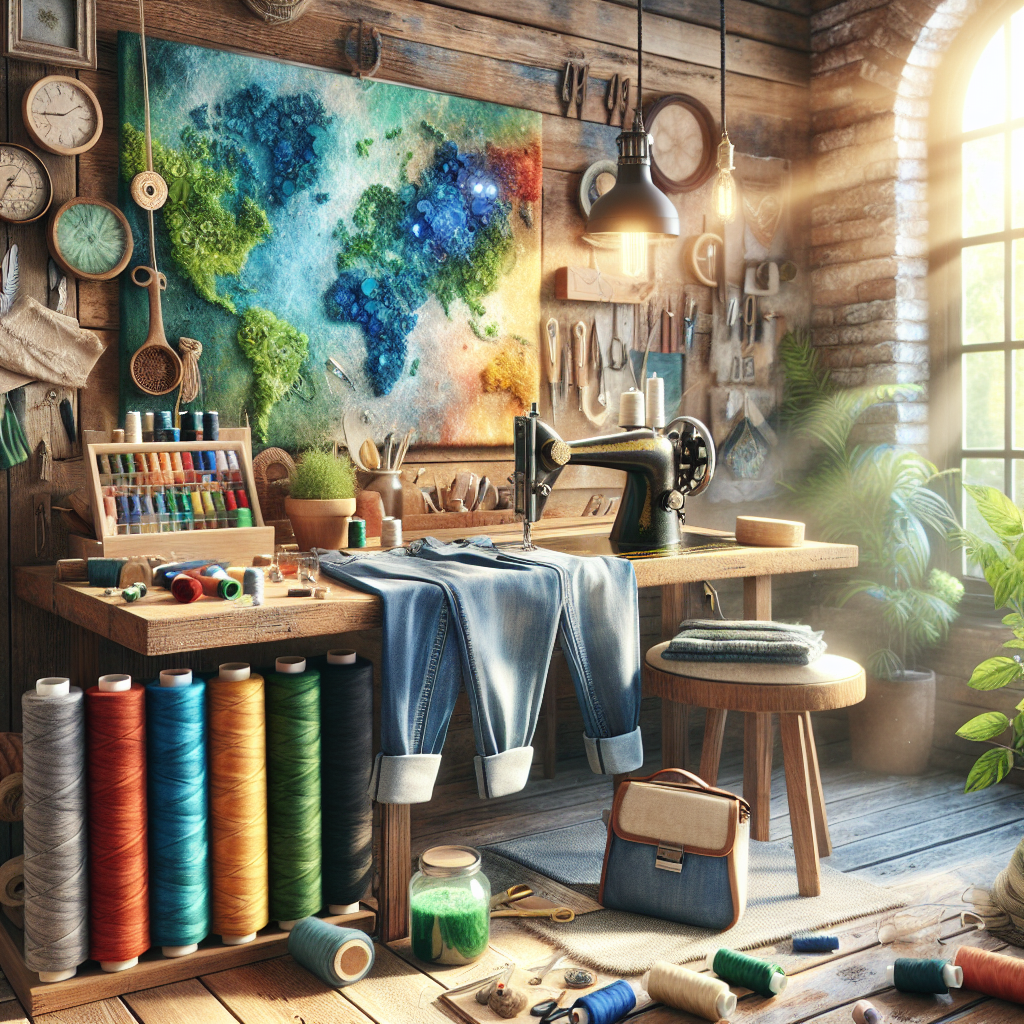In an era where environmental concerns are at the forefront, sustainable sewing practices have emerged as a vital aspect of the crafting community. These practices not only promote creativity but also provide a meaningful way to contribute to a healthier planet. By embracing sewing ideas for sustainable living, enthusiasts can reduce waste, repurpose materials, and create beautiful items that reflect personal style while being environmentally friendly.
The journey toward sustainable sewing begins with the understanding of materials. Opting for organic fabrics, recycled textiles, or even remnants from previous projects can significantly lessen the environmental impact. Additionally, using natural dyes or eco-friendly sewing supplies plays a crucial role in maintaining the integrity of sustainable practices.
Another essential aspect is the concept of upcycling. Transforming old clothing into new creations not only saves resources but also sparks creativity. Think of turning an outdated pair of jeans into a trendy bag or using fabric scraps to craft unique patchwork quilts. Such projects not only breathe new life into materials but also help to minimize textile waste.
Ready to dive into these exciting sustainable sewing ideas? Visit our website to learn more and get started today! Click here.
Creative Sewing Projects for Eco-Friendly Living

Embarking on sewing projects that prioritize sustainability can be both enjoyable and rewarding. Here are some creative sewing projects for eco-friendly living that you can undertake to reduce waste while enhancing your personal style:
- Reusable Shopping Bags: Transform old t-shirts or fabric scraps into sturdy, reusable shopping bags. These bags not only reduce reliance on plastic but also make for great personalized gifts.
- Zero-Waste Aprons: Crafting aprons from leftover fabric pieces can help minimize waste. Opt for unique designs that incorporate pockets and adjustable straps to enhance functionality.
- Upcycled Home Decor: Use old linens or curtains to create beautiful throw pillows or table runners. This not only gives your home a fresh look but also keeps textiles out of landfills.
- Fabric Scrap Coasters: Gather small fabric pieces and sew them together to create colorful coasters. This quick project adds a personal touch to your home while being eco-friendly.
- Sustainable Quilting: Create quilts using fabric remnants from previous projects. This not only showcases your creativity but also promotes the idea of reusing materials.
Each of these projects allows for creativity while encouraging a lifestyle that respects the planet. By focusing on sustainable sewing ideas, you can make a positive impact on the environment while expressing your unique style.
Upcycling Fabric Scraps into New Creations

Upcycling fabric scraps is a fantastic way to breathe new life into leftover materials while minimizing waste. Instead of discarding those small pieces of fabric, consider these engaging ideas to transform them into beautiful new creations:
- Patchwork Projects: Combine various fabric scraps to create patchwork items like bags, quilts, or wall hangings. This not only showcases your sewing skills but also allows for a unique blend of colors and patterns.
- Fabric Jewelry: Use scraps to craft one-of-a-kind fabric jewelry pieces such as necklaces, bracelets, or earrings. By incorporating beads or other embellishments, you can create stunning accessories that are both stylish and sustainable.
- Scrap Fabric Baskets: Sew together fabric strips to create functional and attractive storage baskets. These can be used for organizing craft supplies or as decorative elements in your home.
- Small Pouches and Wallets: Stitch small pouches from fabric scraps to hold coins, makeup, or other small items. These make great gifts while promoting eco-friendly practices.
- Fabric Flowers: Create beautiful fabric flowers from colorful scraps to adorn hair accessories, clothing, or home decor. This project allows for endless creativity and can be customized to suit your style.
Engaging in upcycling projects not only allows you to express your creativity but also contributes to a more sustainable lifestyle. By reimagining fabric scraps, you can make a positive impact on the environment while crafting unique and meaningful items.
Sustainable Fabrics and Materials for Sewing

Choosing the right fabrics and materials is essential for anyone looking to embrace a sustainable sewing practice. With an increasing awareness of environmental issues, many options are now available that not only benefit the planet but also enhance your crafting experience. Here are some sustainable fabrics and materials to consider:
- Organic Cotton: Unlike conventional cotton, organic cotton is grown without synthetic pesticides or fertilizers, making it a healthier choice for both the environment and the farmers. It’s soft, breathable, and versatile, perfect for a range of sewing projects.
- Hemp: This robust fabric is made from the stalk of the hemp plant and is known for its durability and resistance to mold. Hemp requires minimal water and pesticides, making it an eco-friendly option that softens with each wash.
- Linen: Made from the flax plant, linen is a biodegradable fabric that requires less water and fewer chemicals to produce than cotton. It provides a breathable and lightweight option, ideal for warm-weather garments and home textiles.
- Tencel (Lyocell): Crafted from sustainably sourced wood pulp, Tencel is produced through a closed-loop process that recycles water and solvents. Known for its silky smooth texture and moisture-wicking properties, it’s an excellent choice for clothing that feels luxurious against the skin.
- Recycled Fabrics: Fabrics made from recycled materials, such as plastic bottles or discarded textiles, help reduce waste and promote a circular economy. Look for options like recycled polyester or upcycled denim for your next sewing project.
By opting for these sustainable fabrics and materials, you not only contribute to reducing environmental impact but also support ethical practices in the textile industry. Incorporating these choices into your sewing projects can help foster a more eco-conscious approach to crafting.
Tips for Reducing Waste in Your Sewing Projects

As sewing enthusiasts, one of our goals should be to minimize waste while creating beautiful and functional pieces. Here are some practical tips to help you reduce waste in your sewing projects:
- Plan Your Projects: Before diving into a new project, take the time to plan your design and gather all necessary materials. This helps in minimizing fabric scraps and ensures that you have everything on hand to avoid last-minute purchases.
- Use a Fabric Calculator: To avoid overbuying fabric, utilize online fabric calculators that can help estimate the amount of material needed for your specific project. This reduces excess fabric that may end up as waste.
- Embrace Scrap Projects: Get creative with leftover fabric. Use scraps to make smaller items like patchwork bags, quilts, or fabric coasters. Not only does this reduce waste, but it also allows for unique and personalized creations.
- Practice Efficient Cutting: When cutting fabric, lay out your pattern pieces strategically to maximize the use of the fabric. Consider using larger pieces first and placing smaller pieces to fit into the remaining space.
- Repurpose Old Garments: Instead of discarding worn-out clothes, consider repurposing them into new projects. Old denim can be transformed into bags, while t-shirts can become quilts or reusable shopping bags.
By implementing these simple yet effective tips, you can greatly reduce waste in your sewing projects and contribute to a more sustainable crafting community. Every little effort counts towards making a positive environmental impact.
Building a Community Around Sustainable Sewing
Creating a vibrant community around sustainable sewing can significantly enhance your sewing experience and encourage others to adopt eco-friendly practices. Engaging with fellow sewing enthusiasts not only fosters creativity but also promotes the sharing of valuable resources and ideas. Here are some effective ways to build a community focused on sustainable sewing:
- Host Local Workshops: Organize sewing workshops where participants can learn sustainable techniques such as mending, upcycling, and using eco-friendly fabrics. This hands-on approach encourages collaboration and knowledge sharing.
- Join Online Forums: Participate in online communities and forums dedicated to sustainable sewing. Platforms like GrayNeedle.com offer spaces for enthusiasts to connect, share projects, and discuss sustainable practices.
- Share Your Work: Utilize social media to showcase your sustainable sewing projects. By sharing your creations, you not only inspire others but also attract like-minded individuals who are passionate about eco-friendly sewing.
- Start a Sewing Circle: Form a local sewing circle that focuses on sustainability. Regular meet-ups can encourage discussion, project collaboration, and the exchange of resources, creating a supportive environment for everyone involved.
- Engage with Local Fabric Shops: Collaborate with local fabric stores to host events or promote eco-friendly materials. This partnership can help raise awareness about sustainable options available in your area.
By actively participating in the sustainable sewing community, you contribute to a broader movement that values creativity and environmental responsibility. Visit our website to learn more and get started today! Click here.

